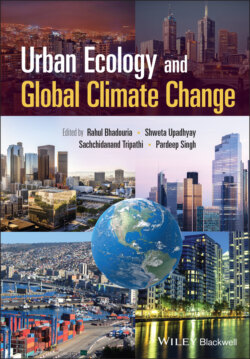Читать книгу Urban Ecology and Global Climate Change - Группа авторов - Страница 16
1.2 Components of Urban Ecology
ОглавлениеAn urban ecosystem is composed of several tangible and intangible components. Tangible components include the physical structures which can be natural (such as flora and fauna, water bodies, mountains, urban agriculture, etc.) or human‐made (such as built structures like buildings and building materials, roads, railways, health, and related infrastructural developments; energy sources like coal, liquified petroleum gas (LPG), wood; food supplies and waste generation, etc.). In addition, the intangible components include the ecosystems services derived from various natural systems, biogeochemical cycling, solar energy, and material flow in the urban areas (Verma et al. 2020a). These major components can be mainly divided into three sectors: (i) urban infrastructures associated with the urban heat island (UHI) effect; (ii) urban vegetation representing the green spaces and related ecosystem services; and (iii) urban metabolism which represents the flow of energy and materials within the urban ecosystems.
